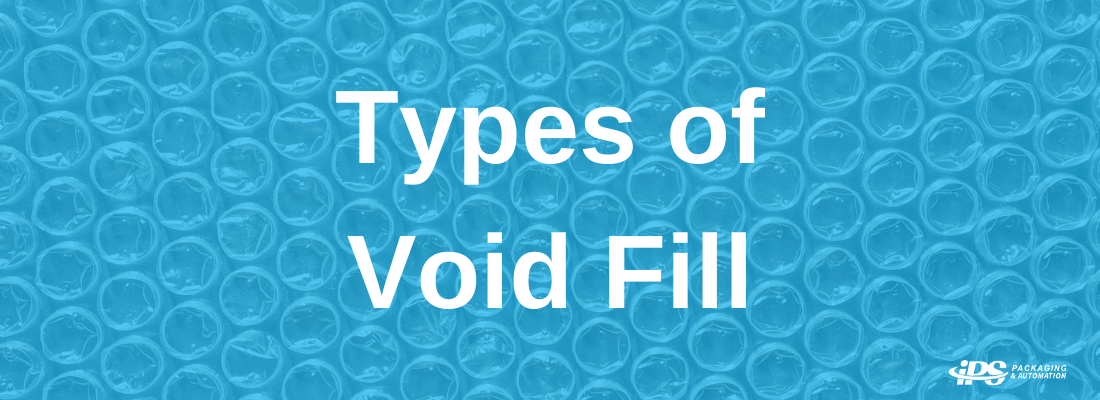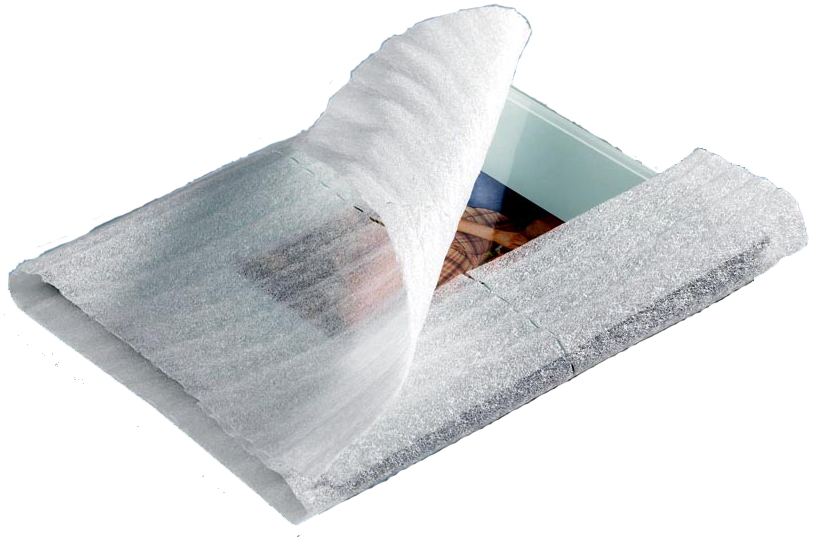

Types of Void Fill
Void fill is one of the most ubiquitous categories of protective packaging available on the market. Businesses all across the world, from small in-home operations to the shipping centers at major corporations, utilize one or more of the many types of void fill in order to protect their products throughout the entire supply chain process. This helpful explainer goes over the most popular varieties of void fill to help you determine which might be the best fit for your specific items and their needs.
What is Void Fill?
Before getting into the finer details of each type of void fill, it’s first necessary to understand what exactly this category of packaging supplies encompasses. As a whole, void fill packaging is a protective material that acts as a cushion during shipment. It is placed inside of a box or container along with the product and, essentially, is something softer and less harmful than the container walls for the item to come into contact with during a bumpy or shaky journey. Basically, void fill is exactly what the name implies – it takes up the empty space inside your product’s outer packaging.
Air Pillows 
The last time you opened up a box of new goodies from one of the world’s largest ecommerce shopping platforms, it’s pretty likely that two or three air pillows were tucked inside. In fact, many ecommerce businesses worldwide are making the switch from more traditional types of void fill to these convenient little cushions. So what exactly is an air pillow?
Simply enough, air pillows are made out of a sheet of plastic film that is filled with air and then sealed off with heat. Most often, the plastic film is kept on one larger roll before the individual sheets are inflated. The benefits of air pillows include a high level of protection and product bracing, compact storage, custom sizing, and ease of use.
Kraft Paper
We’ve all heard of and used paper before, but there’s one specialty variety that makes an exceptional void fill – kraft paper. Kraft paper is another common type of void fill that is probably the simplest to use. All you need to do is crinkle it up or shred it and place it inside your container. You can also wrap sheets of paper around individual items for extra protection. Frequently, kraft paper is a natural brown in color, but comes in a wide range of different styles.
Kraft paper is one of the most versatile types of void fill. It’s great for wrapping small or delicate items and does double duty by effectively filling up any leftover empty space. Additionally, it is eco-friendly and fully recyclable while offering a polished look that helps to create an exciting unboxing experience for your customer, making it a great choice for smaller ecommerce businesses that ship individual products rather than full pallets.
Bubble Wrap
Practically everyone who’s ever received a package before has experienced the joys of popping the air pockets on a piece of bubble wrap, but this material does a lot more than just provide an entertaining diversion. Bubble wrap is a traditionally popular choice for void fill. It consists of a sheet of plastic film with small bubbles of air across the sheet (that make a very satisfying noise when you pop them!).
Bubble wrap is an outstanding choice to protect delicate or fragile items, as well as goods with sensitive surfaces that are especially susceptible to scratches. Generally, the manufacturer or distributor will wrap the bubble film around an individual item or pack it into the empty space inside the container in order to safeguard against harm. Once the bubble wrap is situated, it can be kept in place with the help of tape, though some varieties come with an adhesive backing and others are available in pouch form. One downside to bubble wrap is that it isn’t particularly sustainable – it is most often made without a high percentage of recyclable materials and most consumers won’t know how to recycle it.
Foam Sheets and Foam Pouches

Though not as common as air pillows, bubble wrap, or paper, foam sheets and foam pouches are a great choice for cushioning your products. While they can be used as one of the many types of void fill, it’s more likely that foam packaging materials will be wrapped around a product made of glass, vinyl, or something else that’s easily scratched.
Oftentimes, foam sheets will be layered in between stacks of fragile items, such as plates or other dishware. In addition to this, foam pouches can completely enclose a product and are often sealed with tape or heat. Foam is convenient, easy to use, and can be quickly cut to size when packaged on a larger roll.
Tissue Paper
Though perhaps not the most durable of the different types of void fill, tissue paper offers many other advantages. Out of all the choices for void fill, tissue paper is generally considered the most elegant and sophisticated in appearance. When a customer opens a box filled with plain or customized tissue paper, they’ll be treated to a luxurious unboxing experience that really makes them feel like they’ve paid for high-end, high-quality goods – and you don’t have to spend an arm and a leg to make it happen.
Tissue paper is a budget friendly void fill that can be customized in a variety of ways. You can opt for paper that’s printed with your logo or contact information, or even just colored tissue paper that complements your brand. Creating a premium experience is a great method for ensuring customer satisfaction. Just make sure to give your items full protection against any bumps or vibrations that take place during shipping at the same time.
Packing Peanuts
We’ve all been there before. You open up that long-awaited box and along with it comes a seemingly endless mountain of packing peanuts. They get everywhere, seem to stick to just about everything, and you’ll probably still be finding them next month. Packing peanuts were once one of the most common types of void fill, but for the aforementioned reasons, have experienced a significant decline in popularity in recent years.
These staticky little peanuts are made from expanded plastic that’s been injected with air. They do a great job of filling space, are lightweight, and cost effective. This means they won’t drive your shipping costs up by weighing down the box. As a manufacturer or retailer, you’ll also need to designate quite a bit of space in your warehouse or shipping area just to store them.
Choosing Between the Types of Void Fill
Making the decision on which direction to go for your void fill needs may seem a little daunting, but have no fear. Our team of dedicated account managers is standing by to assist with all of your packaging supply and equipment needs. They have years of experience and plenty of training in order to help guide you in the right direction. Contact us today at this link or give us a call at 800-277-7007!








